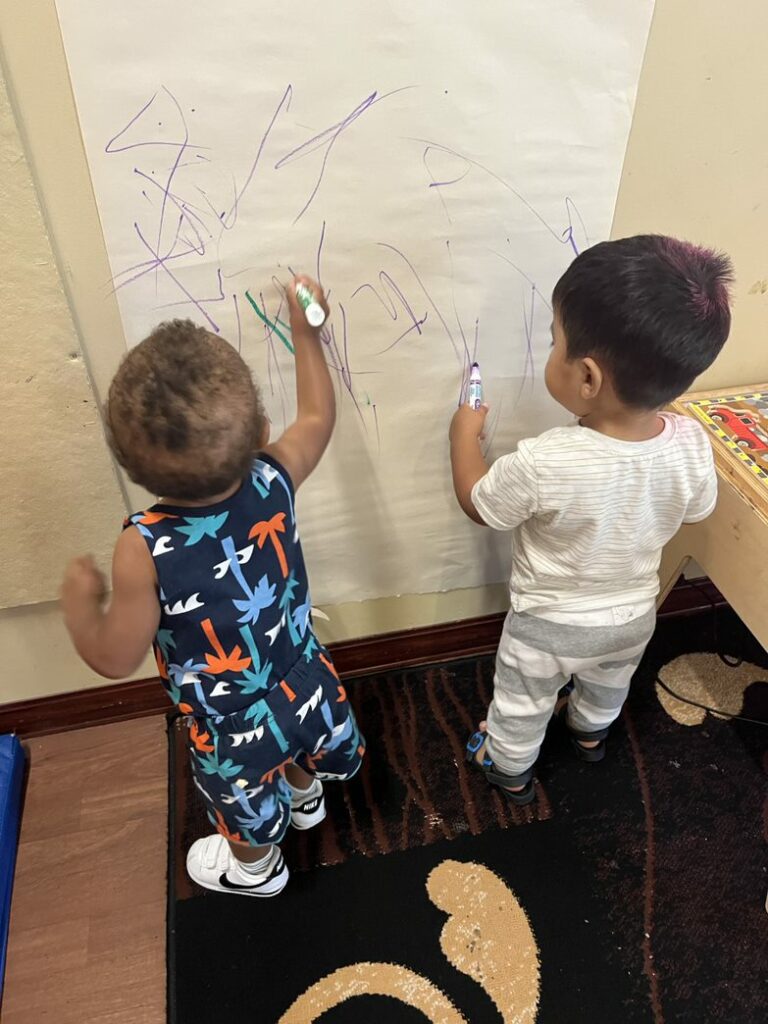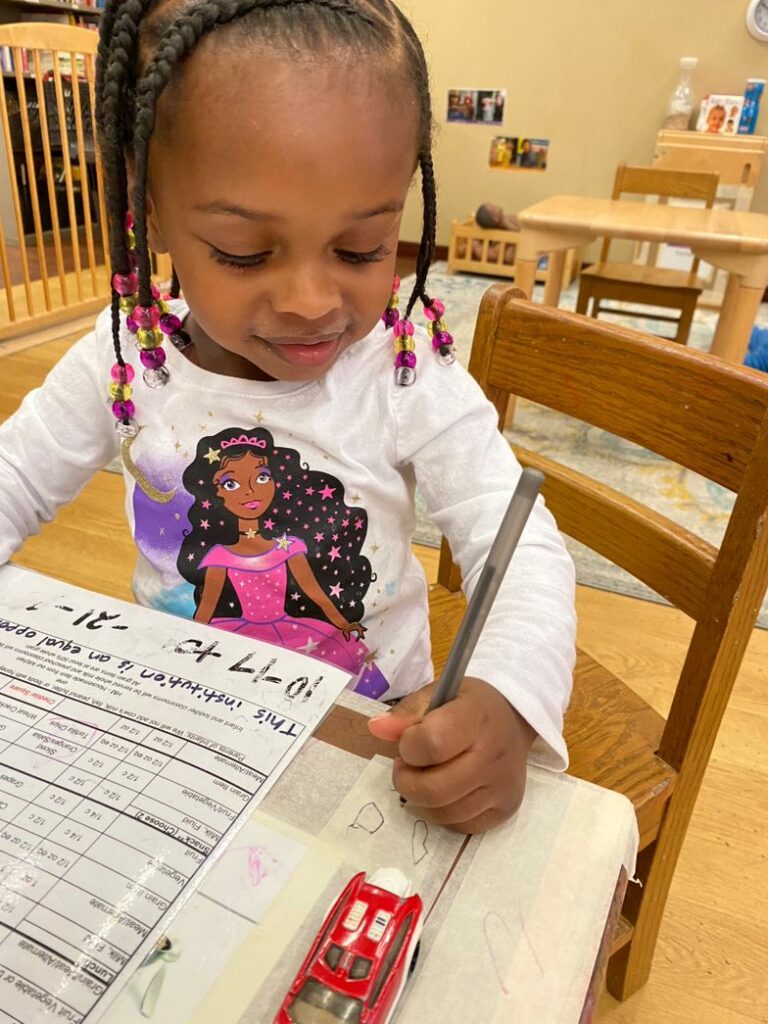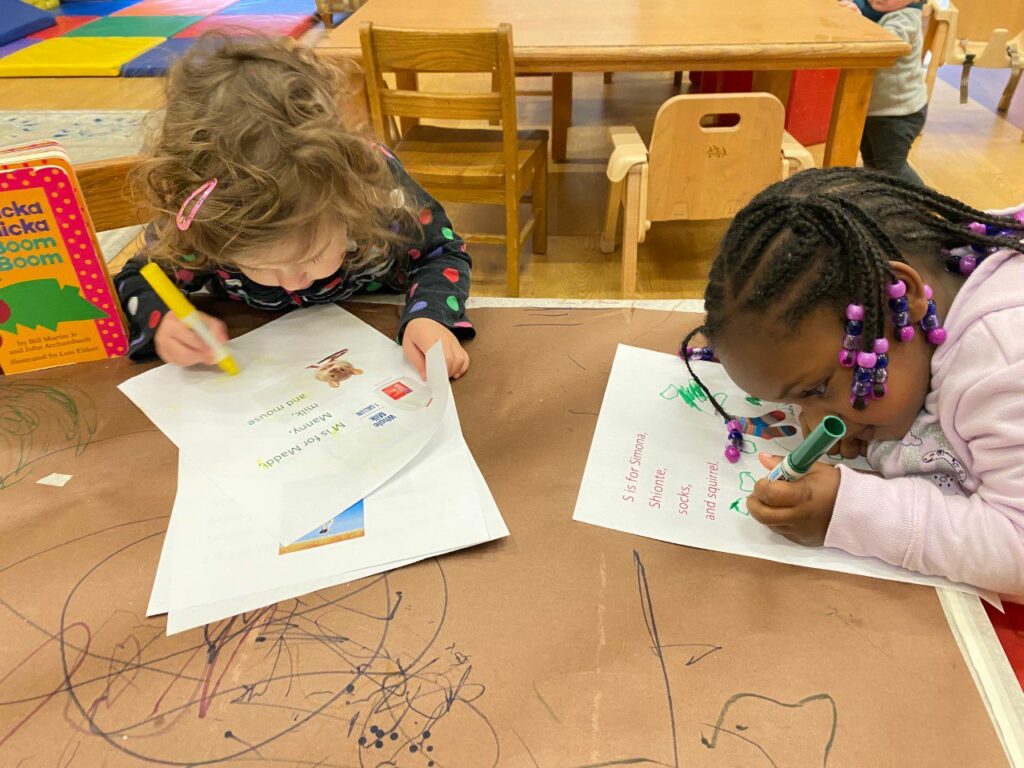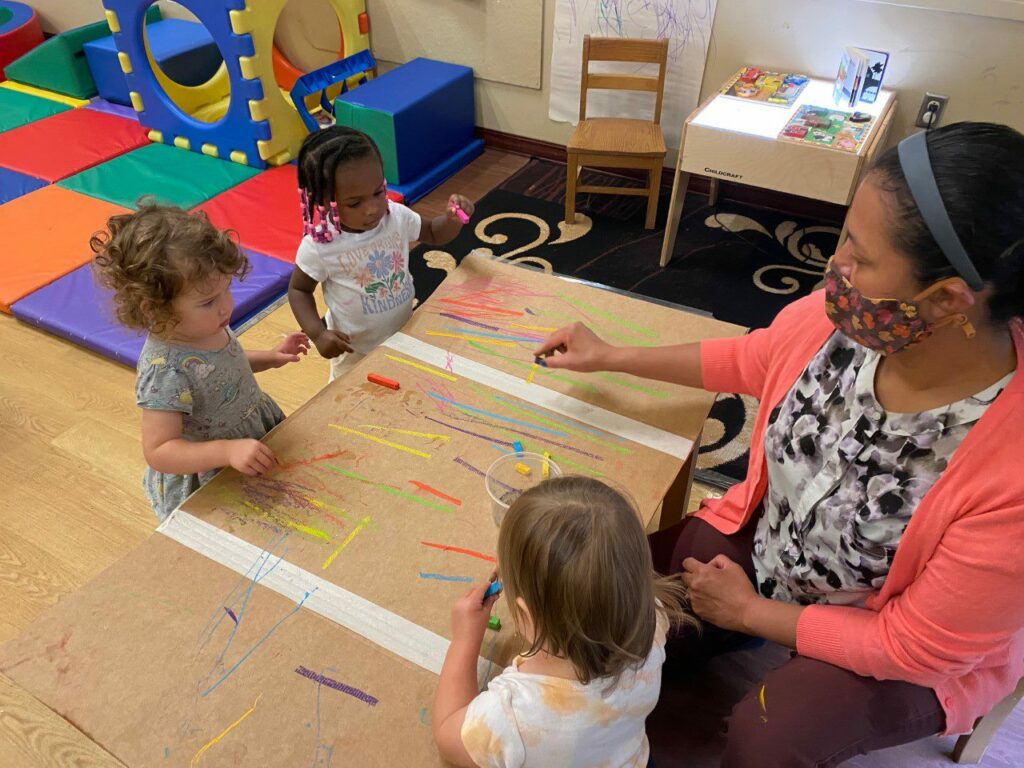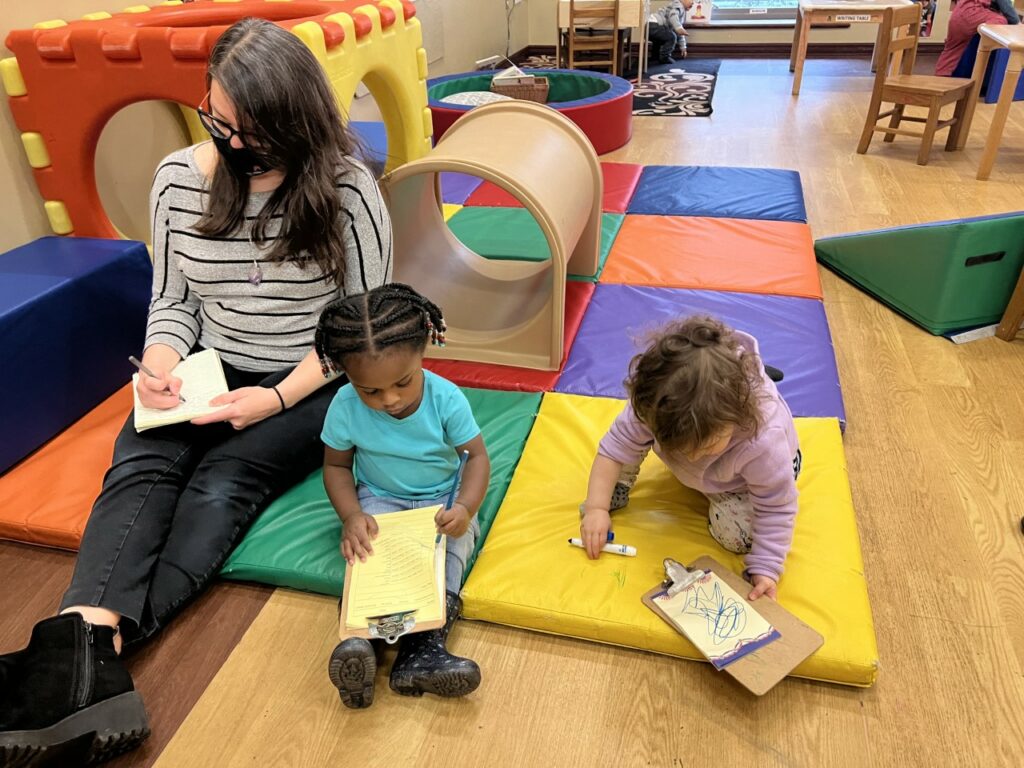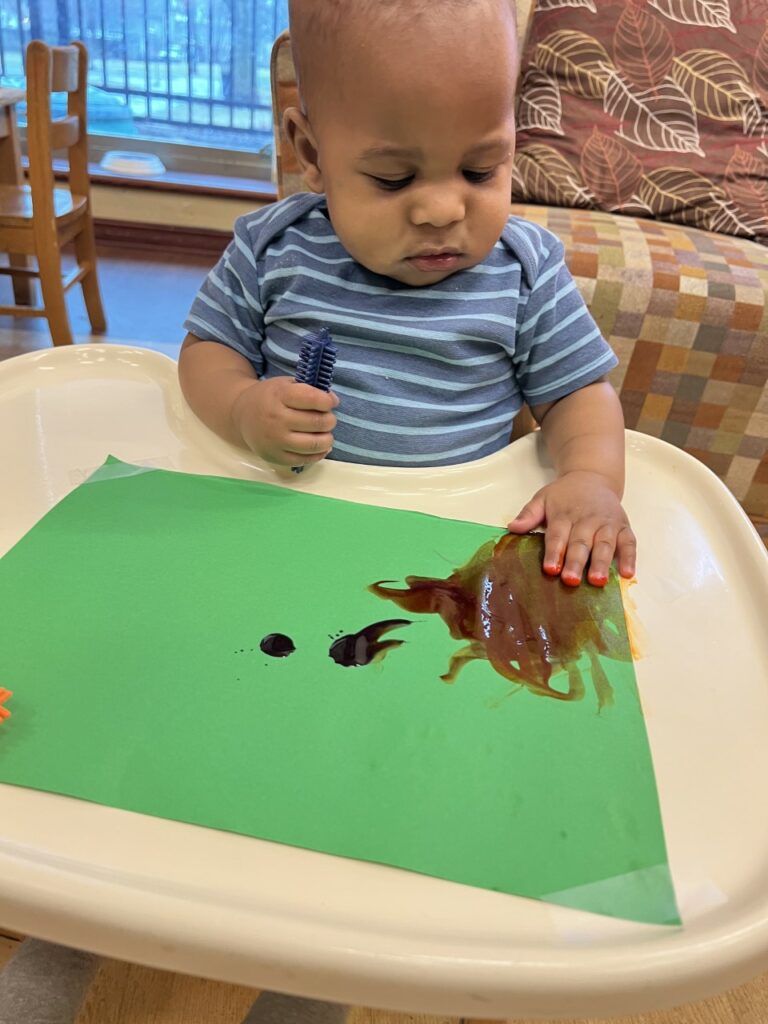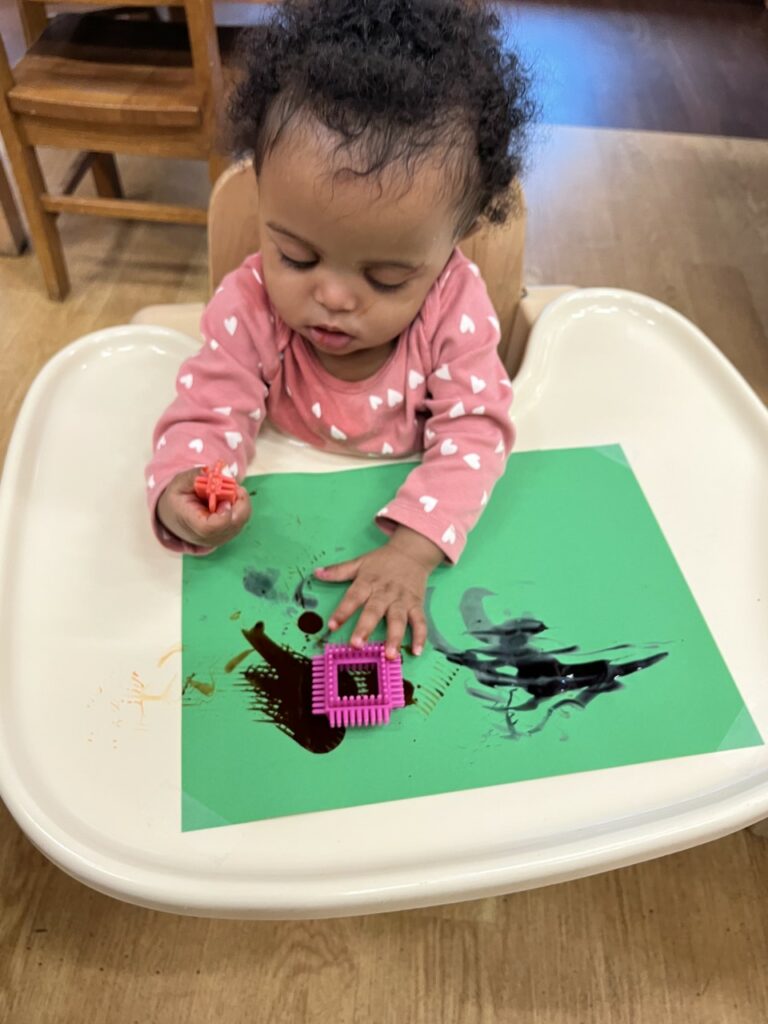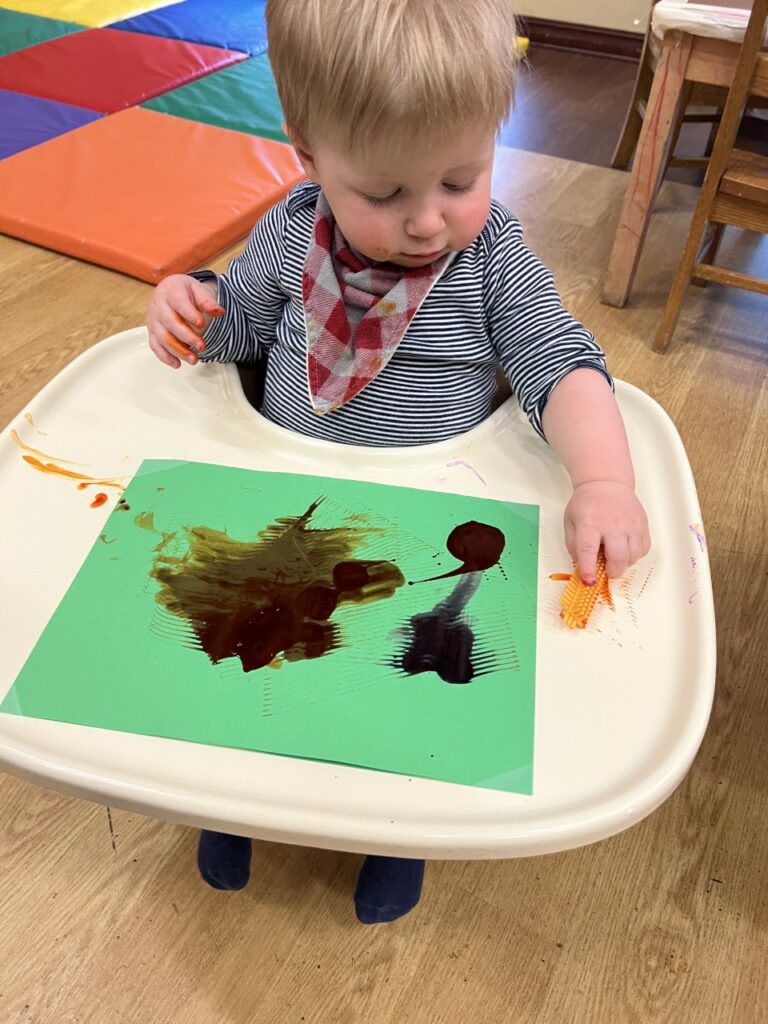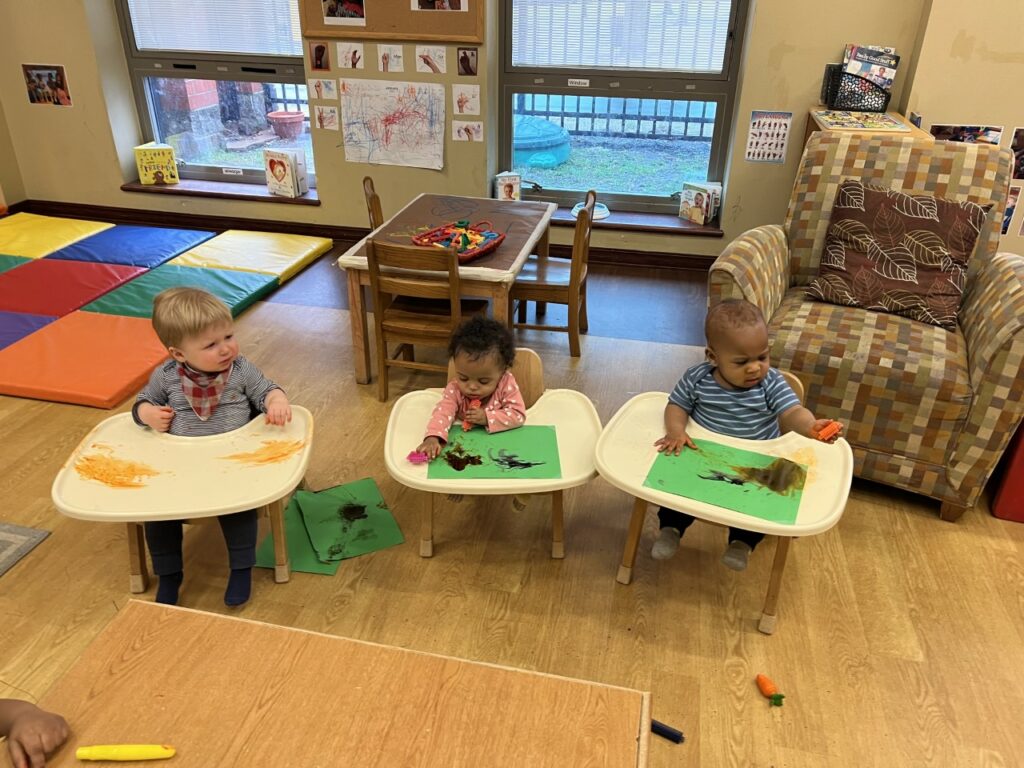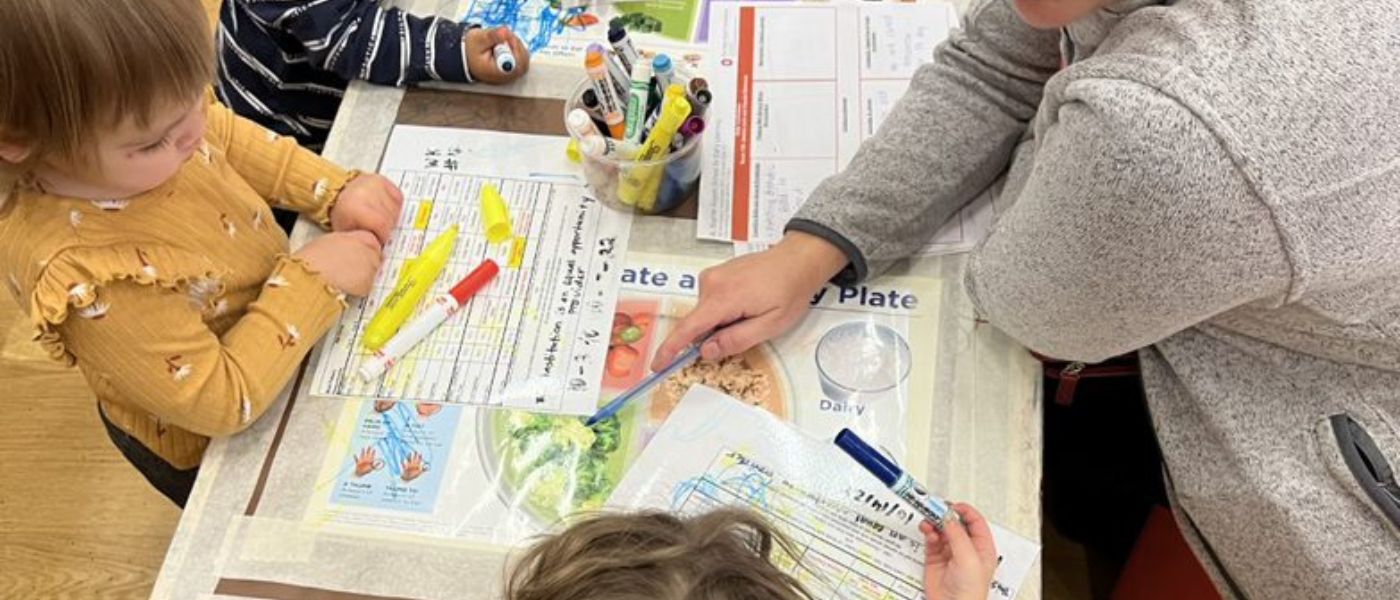
Adults observe children make, what appears to be random marks on paper, they may be tempted to call those marks ‘scribbles’; however, if you ask the child about what they are creating, you may find that random ‘scribble’ has a meaning and purpose to the child. Adults can find out more about the purpose and intent of the work by saying the the child, “tell me about your picture” or asking, “what did you write?”. This can often begin a conversation with many opportunities for back-and-forth exchanges between children, teachers, and their peers.
When the teacher asked the question “what does your work say?” the child responded, “I make a L for Lucy!” Teachers model writing as part of the classroom routine by writing in front of children on their daily report sheets, whiteboards, post-its, in notebooks, etc. This frequently results in the children imitating what they see their teachers writing. This particular infant/toddler classroom has demonstrated a strong interest in writing for months and the teachers have been using the following techniques to build upon that interest and encourage pre-writing and literacy skills such as:
- Asking open-ended questions
- Having one-on-one interaction
- Displaying a variety of writing tools at the children’s eye level
- Printing children’s photos with their names
- Use photos with children’s names as writing provocations
- Providing infants materials in their high chairs:
- Paint brushes
- Paint
- Markers
- Paper
- Blocks
Teachers give children the opportunity to choose what writing materials they want to use and select based on color, size, or texture. Giving the babies different types of tools allows them to develop and strengthen their fine motor skills which is a precursor to writing. These young children are still learning how to properly handle these tools and teachers focus introducing the proper use of the tool such as not eating markers or writing on the wall but giving them the opportunity to explore these materials in a safe and productive way. Teachers believe that by giving the children some freedom but with explicit intentionality, working with the children will promote a love of writing that will last a lifetime.
